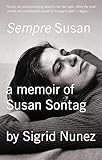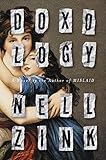There was a point about two or three years ago when I thought it would be prudent to start a Goodreads. I liked it for its lo-fi website, and thought it might help me remember what I had read, as I have a knack for forgetting. All turned to chaos when I requested my entire Facebook friends list to connect via the inevitable plug-in to Goodreads, and suddenly my second grade teacher and some boy who I kissed in a closet in middle school were liking my entries. I deleted my account then and there, not only for the embarrassment it caused but also because I realized it would do more harm than good: Why would I want to turn one of my most pleasurable activities into a competition? If the venal churn of such culture was destructive, it would certainly only make me, a notoriously slow reader, feel bad.
I made a mental note to catalog my reading in my notes app instead—so much more personal! When I turned back to the note today, last edited January 4, 2021, 9:48pm, there was only one entry. Perhaps the will to index is strongest only when we know the eyes of others are gazing upon us.



 Looking back now is decidedly more fun, as I’m able to categorize my reads in a bit more of a cogitant way. I will call them phases. The first phase I had this year was the “mourning for grad school” period. This included books that expanded on ideas or writing styles I was thinking about when I graduated. Among them were Philippa Snow’s debut Which as You Know Means Violence, which reads like one big critical essay, and Olivia Laing’s Funny Weather, gifted to me by a former professor upon my departure from my Master’s program. If writing about art is still something I see myself doing next year, hopefully it’s in the way of Laing: light, resonant, impressionistic, and tangential without being overly didactic. Vivian Maier: Developed is also about art and art-making, though less aspirational, and more punishing of its subject. Biographies on the mind, I followed these books with a rare re-read of Sempre Susan, still one of my favorite, if overly cutting portraits of the writer, which makes you feel as if you’re pressing your ear up the side of Sontag’s apartment door on Riverside Drive. Somewhere in here I continued romanticizing old New York, sipping up Paula Fox’s Desperate Characters like a big glass of water after a long night of drinking. I will be turning back to this book forever.
Looking back now is decidedly more fun, as I’m able to categorize my reads in a bit more of a cogitant way. I will call them phases. The first phase I had this year was the “mourning for grad school” period. This included books that expanded on ideas or writing styles I was thinking about when I graduated. Among them were Philippa Snow’s debut Which as You Know Means Violence, which reads like one big critical essay, and Olivia Laing’s Funny Weather, gifted to me by a former professor upon my departure from my Master’s program. If writing about art is still something I see myself doing next year, hopefully it’s in the way of Laing: light, resonant, impressionistic, and tangential without being overly didactic. Vivian Maier: Developed is also about art and art-making, though less aspirational, and more punishing of its subject. Biographies on the mind, I followed these books with a rare re-read of Sempre Susan, still one of my favorite, if overly cutting portraits of the writer, which makes you feel as if you’re pressing your ear up the side of Sontag’s apartment door on Riverside Drive. Somewhere in here I continued romanticizing old New York, sipping up Paula Fox’s Desperate Characters like a big glass of water after a long night of drinking. I will be turning back to this book forever.



 If I am not immune to the pangs of keeping up, wanting to consume new releases is no exception. This group of books is that which I will unabashedly call my trendy stitch. It began with Sheila Heti’s Pure Colour. I picked it up not only because Na Kim is one of the best designers out there right now, but also because I assigned it to my book club. Was I enraptured? I’m not sure. But walking through the Queens Museum several days after putting this down, I couldn’t stop staring at the stained glass lamps from the The Neustadt Collection. Somewhere along the line, I read Fernanda Melchor’s fabulous novel Paradais. Then came Sean Thor Conroe’s somewhat entertaining Fuccboi, and Otessa Moshfegh’s Lapvona. The last of this list was a good test of my own instinct to put something down if it’s not interesting me. What can I say about Lapvona? I’ve never been a Game of Thrones girl.
If I am not immune to the pangs of keeping up, wanting to consume new releases is no exception. This group of books is that which I will unabashedly call my trendy stitch. It began with Sheila Heti’s Pure Colour. I picked it up not only because Na Kim is one of the best designers out there right now, but also because I assigned it to my book club. Was I enraptured? I’m not sure. But walking through the Queens Museum several days after putting this down, I couldn’t stop staring at the stained glass lamps from the The Neustadt Collection. Somewhere along the line, I read Fernanda Melchor’s fabulous novel Paradais. Then came Sean Thor Conroe’s somewhat entertaining Fuccboi, and Otessa Moshfegh’s Lapvona. The last of this list was a good test of my own instinct to put something down if it’s not interesting me. What can I say about Lapvona? I’ve never been a Game of Thrones girl.



 Generally, I find myself reading fiction much more quickly than nonfiction. Rachel Aviv’s Strangers to Ourselves proved this tendency very wrong. Perhaps my favorite thing I read this year, in Strangers Aviv articulates an idea that I had been mulling over but not quite able to decipher for some time. The inclusion of the self in this book is not at all gratuitous. It uses the self to reflect out to the world rather than vise versa: an idea Lauren Oyler presented in her infamous murder of Trick Mirror. Strangers to Ourselves dovetailed some other books I was reading at the time nicely, thereby inciting my “psychological phase.” Other participants included Alice Wexler’s biography of her father, The Analyst, and Janet Malcolm’s Psychoanalysis: The Impossible Profession, written in Malcolm’s characteristic blocky-quotey way. Malcolm’s father was an analyst, though probed on her own analytic tendencies she was apparently shy. Reading Psychoanalysis, the dynamic is difficult to parse: Is Malcolm spending her hour with Dr. Aaron Green, or is Dr. Aaron Green spending his hour with Malcolm?
Generally, I find myself reading fiction much more quickly than nonfiction. Rachel Aviv’s Strangers to Ourselves proved this tendency very wrong. Perhaps my favorite thing I read this year, in Strangers Aviv articulates an idea that I had been mulling over but not quite able to decipher for some time. The inclusion of the self in this book is not at all gratuitous. It uses the self to reflect out to the world rather than vise versa: an idea Lauren Oyler presented in her infamous murder of Trick Mirror. Strangers to Ourselves dovetailed some other books I was reading at the time nicely, thereby inciting my “psychological phase.” Other participants included Alice Wexler’s biography of her father, The Analyst, and Janet Malcolm’s Psychoanalysis: The Impossible Profession, written in Malcolm’s characteristic blocky-quotey way. Malcolm’s father was an analyst, though probed on her own analytic tendencies she was apparently shy. Reading Psychoanalysis, the dynamic is difficult to parse: Is Malcolm spending her hour with Dr. Aaron Green, or is Dr. Aaron Green spending his hour with Malcolm?




 My last phase is a little like an honorable mentions list; some miscellaneous, non-otherwise specified reads. This includes Sleepless Nights, which I read this year for the first time. Undoubtedly poetic, though I think I tried to pull more from it than perhaps I should have. Less difficult, I waded into Nell Zink, cracking open her latest novel Avalon, then her earlier work, Mislaid and Doxology. She’s so peculiar, unlike anyone I’ve read before. I’m not sure exactly what I’ve forgotten from this list, or how I’ll close the year, but I think next on my list is Annie Ernaux’s Cleaned Out. The copy I’ve acquired is a library book. I hope I can quell the urge to scribble in the margins.
My last phase is a little like an honorable mentions list; some miscellaneous, non-otherwise specified reads. This includes Sleepless Nights, which I read this year for the first time. Undoubtedly poetic, though I think I tried to pull more from it than perhaps I should have. Less difficult, I waded into Nell Zink, cracking open her latest novel Avalon, then her earlier work, Mislaid and Doxology. She’s so peculiar, unlike anyone I’ve read before. I’m not sure exactly what I’ve forgotten from this list, or how I’ll close the year, but I think next on my list is Annie Ernaux’s Cleaned Out. The copy I’ve acquired is a library book. I hope I can quell the urge to scribble in the margins.
The post A Year in Reading: Alana Pockros appeared first on The Millions.
Source : A Year in Reading: Alana Pockros











